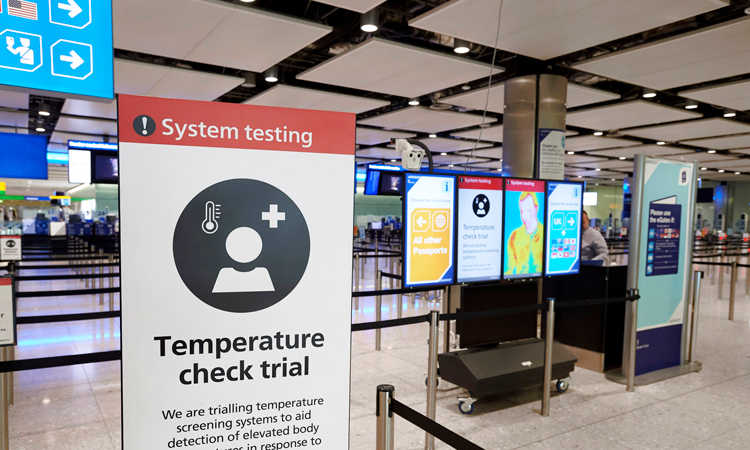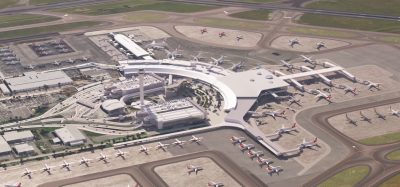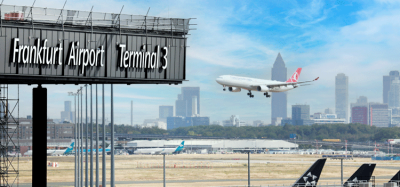Heathrow Airport trials COVID-19 thermal screening technology
- Like
- Digg
- Del
- Tumblr
- VKontakte
- Buffer
- Love This
- Odnoklassniki
- Meneame
- Blogger
- Amazon
- Yahoo Mail
- Gmail
- AOL
- Newsvine
- HackerNews
- Evernote
- MySpace
- Mail.ru
- Viadeo
- Line
- Comments
- Yummly
- SMS
- Viber
- Telegram
- Subscribe
- Skype
- Facebook Messenger
- Kakao
- LiveJournal
- Yammer
- Edgar
- Fintel
- Mix
- Instapaper
- Copy Link
Posted: 21 May 2020 | International Airport Review | No comments yet
The new temperature screening trials are currently being undertaken in Heathrow Airport’s Terminal 2, but are set to be implemented in other areas of the airport should they be successful.


Credit: London Heathrow Airport
Thermal screening technology is being trialled in London Heathrow Airport (LHR) Terminal 2’s immigration hall, to detect elevated temperatures of arriving passengers, a symptom of COVID-19.
Findings from these trials will be shared with the UK government in order to aid the rapid creation of a Common International Standard for health screening, which is needed to unlock global trade and travel.
The technology currently under trial at Heathrow Airport uses camera detection systems capable of monitoring the temperatures of multiple people moving through the airport. Passengers will be alerted to the trials through signage placed throughout the immigration hall, but will otherwise see no visible change to their arrivals journey, as no other screening methods will be needed. No personal data will be stored or shared during these trials.
If successful, the equipment may be introduced in other spaces within the airport – including departures, connections and colleague search areas – to further stress test its capabilities. Heathrow Airport understands that any measures or technology must satisfy certain tests if it is introduced as mandatory in the future, including: Satisfying medically grounded science; able to build confidence amongst passengers; and be practical for airports to deliver.
Temperature screening is part of a wider set of processes and technology set to be trialled at Heathrow Airport that are exploring how the risk of contracting or transmitting COVID-19 while travelling can be reduced. As of mid-May 2020, all operational airport colleagues will be wearing face coverings and will be handing out face coverings to any arriving and departing passengers who do not have their own. This is in addition to the provision of over 600 hand sanitiser stations, enhanced cleaning regimes, prominent signage featuring government health advice, perspex barriers for frontline contact points and social distancing reminders.
Heathrow Airport will also explore the use of ultra-violet sanitation to quickly and efficiently sanitise security trays and contact-free security screening equipment in order to reduce person-to-person contact.
The launch of the trials comes as the UK government considers the implementation of ‘air bridges’ across destinations with a low COVID-19 risk, to protect public health while enabling the travel of goods and services that is needed to restart the economy. Current expert advice suggests that temperature checks at UK airports are not required, however, it is hoped findings from this trial will help governments to introduce the policy framework leading to a global Common International Standard for health screening.
CEO of London Heathrow Airport, John Holland-Kaye, said: “We welcome the Secretary of State for Transport’s ‘air bridge’ proposals to allow trade to continue between destinations with low COVID-19 risks. To unlock the full benefits of aviation for the economy, a Common International Standard for health screening must be agreed by the global authorities – and the technology we are trialling now could be a part of this solution. As one of the world’s great trading nations, the UK should take a lead in setting a global plan to reopen borders, when it is safe to do so. This will help protect millions of British jobs that rely on aviation, but are currently at risk.”
Related topics
Airport crisis management, COVID-19, Regulation and Legislation, Safety, Terminal operations

















